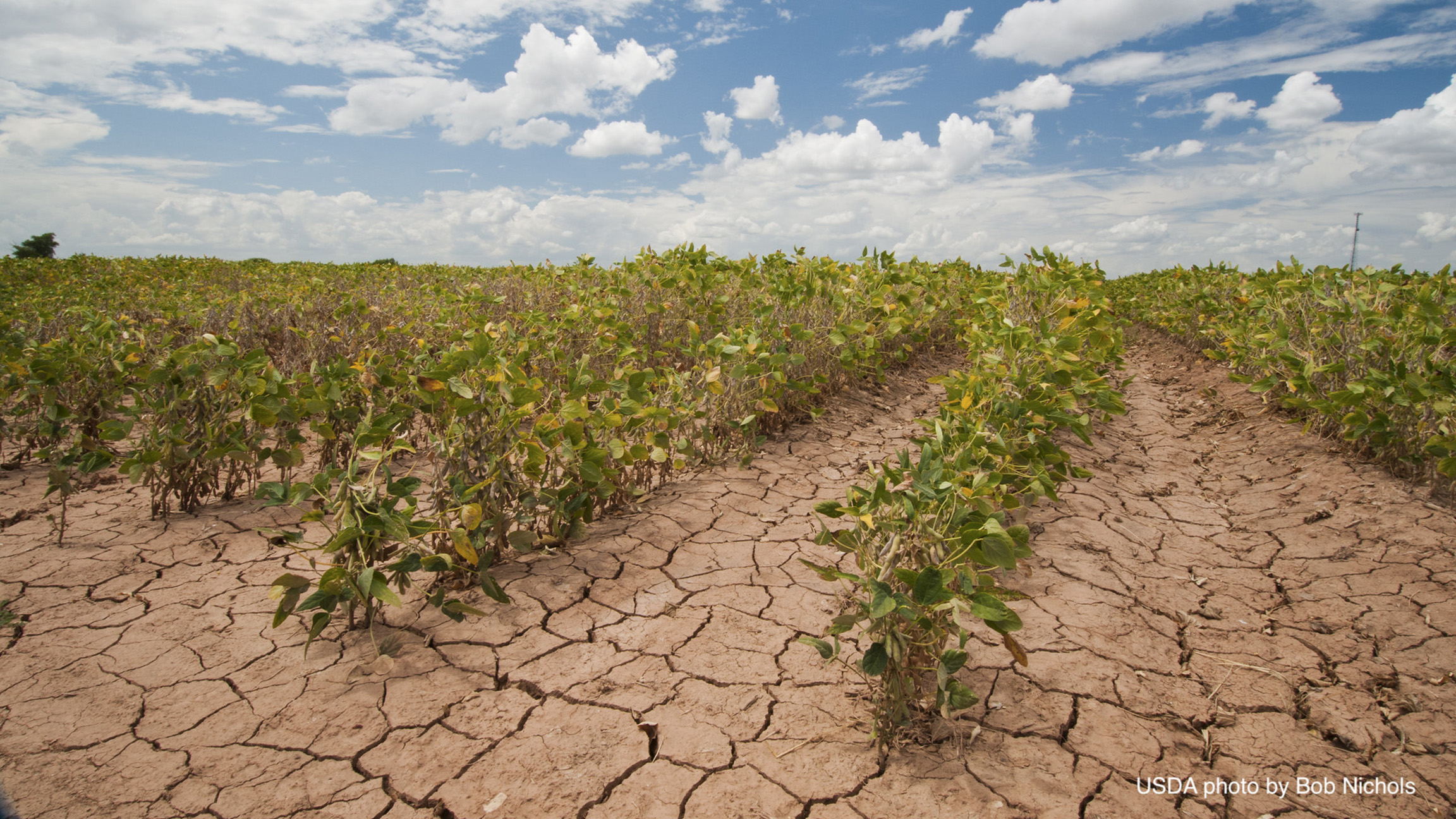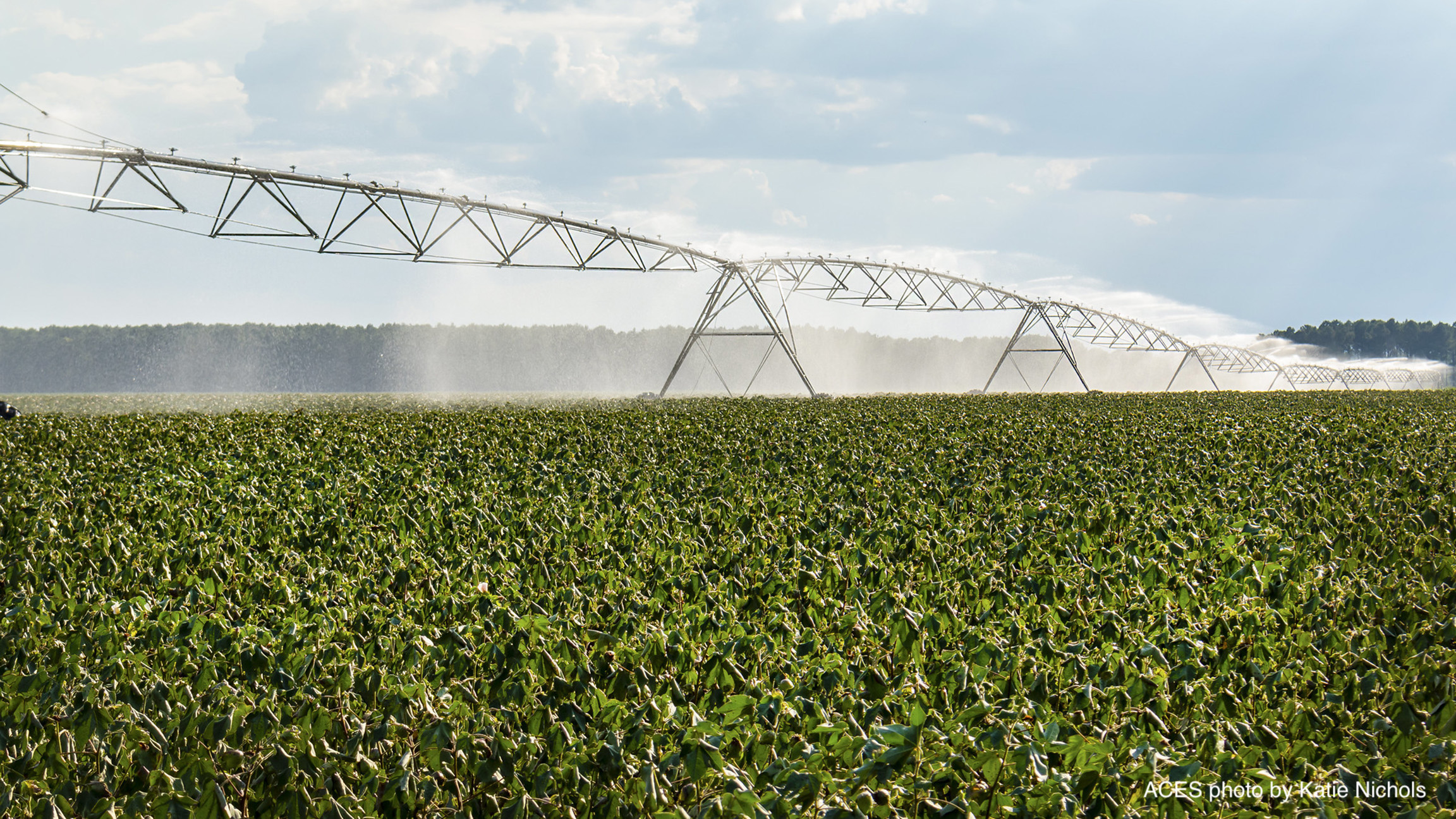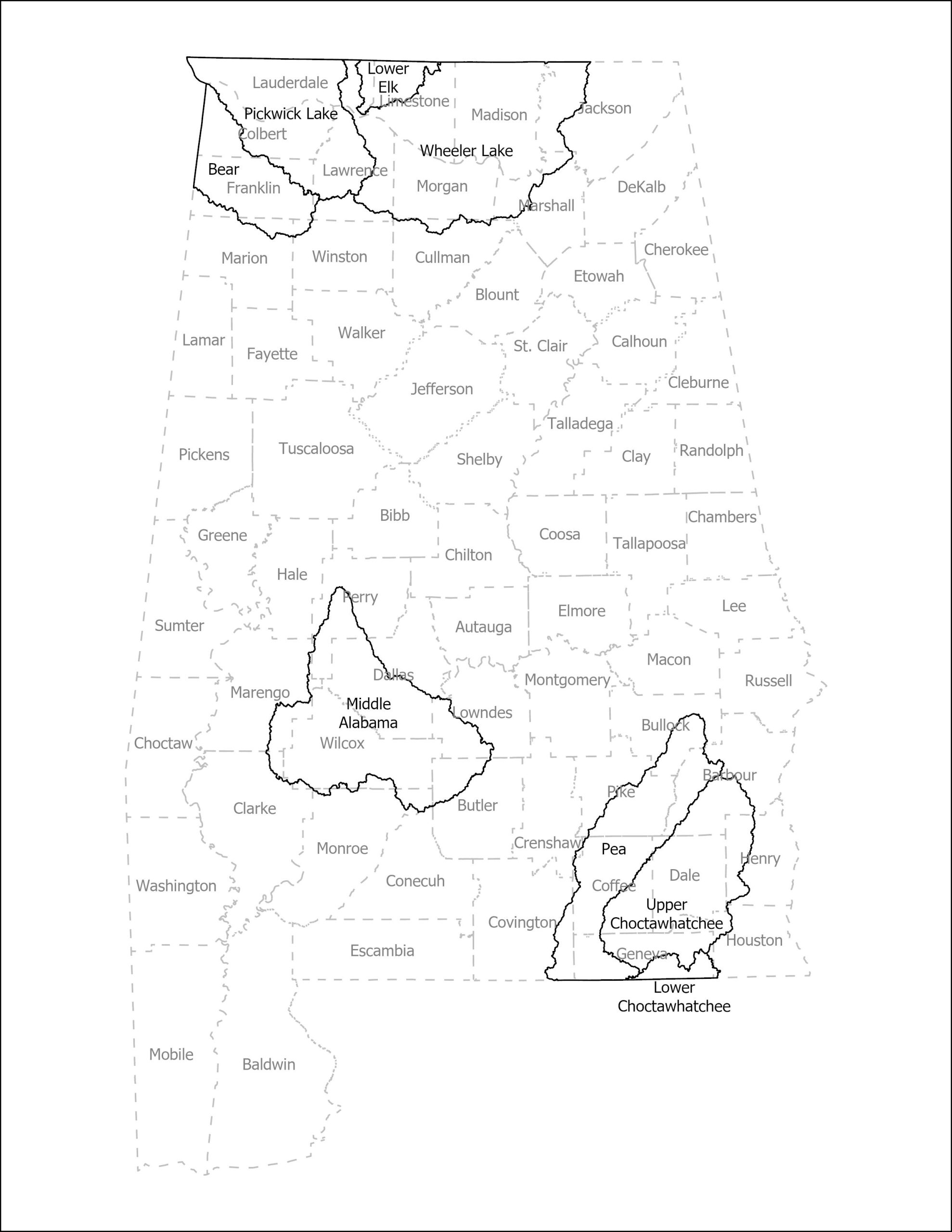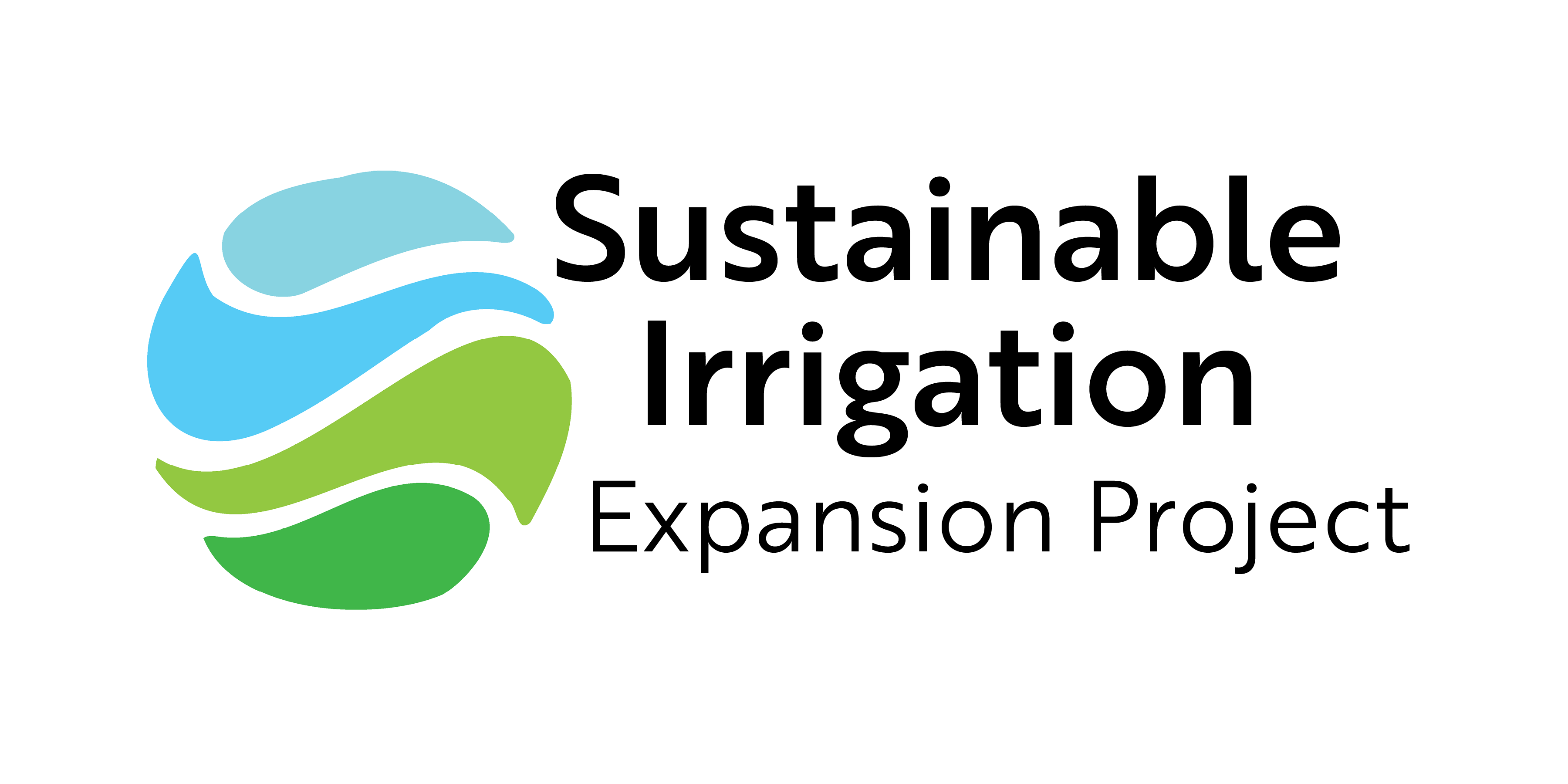Did you know that converting rainfed cropland to properly managed irrigated cropland improves environmental outcomes? Well, it does! Even in rain-rich Alabama. Though the plentiful rainfall across the state (>55 in/year on average) indeed diminishes the amount of irrigation needed, supplemental irrigation has been shown to significantly increase yields, reduce risks of crop losses, and enhance farmers’ resilience in the face of droughts and climate change. Even short-term droughts during the growing season can cause unsustainable damage during critical stages of growth. While these short-term droughts are less likely to affect regional hydrology, they can have devastating impacts on crop yields.
A moderate amount of irrigation (4 inches/season on average) has the potential to protect crops from such losses. Preventing such crop losses improves watershed health in several ways. Preventing drought stress in crops increases crop nutrient use efficiency and overall crop nutrient uptake, thus decreasing the level of nutrients leached to nearby waterways. Research has even demonstrated that nitrate leaching into groundwater increases significantly in drought years in clay-heavy soils. Preventing crop loss also ensures more organic matter is returned to the soil, thus improving soil nutrient- and water-holding capacity.

The loss of crops to drought threatens watershed health because of increased erosion, higher nutrient leaching rates, and soil quality degradation. Photo Credit: USDA
The AUWRC is working with the Alabama Soil and Water Conservation Committee (SWCC) and the USDA Natural Resources Conservation Service (NRCS) to help producers convert rainfed farmland to irrigated farmland in select Alabama watersheds. A watershed, also known as a drainage basin, is an area of land where precipitation drains into a common outlet such as a river or bay. For example, all the land in the Middle Alabama River watershed “sheds” precipitation to the Alabama River. This program is not funded through the Farm Bill, but by the Watershed Protection and Flood Prevention Program (Public Law 83-566). PL 83-566 authorizes the USDA to provide technical and financial assistance to state and local agencies to plan and implement projects that protect small watersheds. Alabama is the first state where these funds have been used to assist individual farmers to install irrigation infrastructure.
Before federal funds can be released to farmers within a watershed, a Watershed Management Plan and Environmental Assessment must be completed and approved. Auburn University is working with SWCC to create the watershed plans for this project with the help of teams at the University of Alabama in Huntsville and Tuskegee University. These plans inventory existing environmental resources, analyze the regional hydrology, and inform where and how irrigation can be sustainably implemented. Producers in the watershed can then apply to the program through the SWCC. Approved producers who complete the application process receive cost-share assistance for irrigation infrastructure installed so long as the guidelines in the Watershed Management Plan are followed.

Center pivot irrigation in a cotton field in Alabama. Photo Credit: ACES
SIE Watershed Plans
The first watershed plans completed were the Wheeler Lake watershed in northern Alabama and the Pea River and Upper Choctawhatchee River watersheds in southeastern Alabama. AUWRC is nearing the completion of the watershed plan for the Middle Alabama River Basin. Farmers in that watershed will be able to apply to the program through the SWCC in Spring 2023.
The next watershed plan developed by AUWRC will be for the Pickwick Lake and Bear Creek watersheds in northeastern Alabama.
To learn more about the program, contact your local Alabama Soil and Water Conservation district office.

The watershed basins depicted here are the first areas in AL where PL 83-566 funds are being used to promote the sustainable expansion of irrigation.
For upcoming events visit the AUWRC Events Calendar or read more about the Sustainable Irrigation Expansion.

